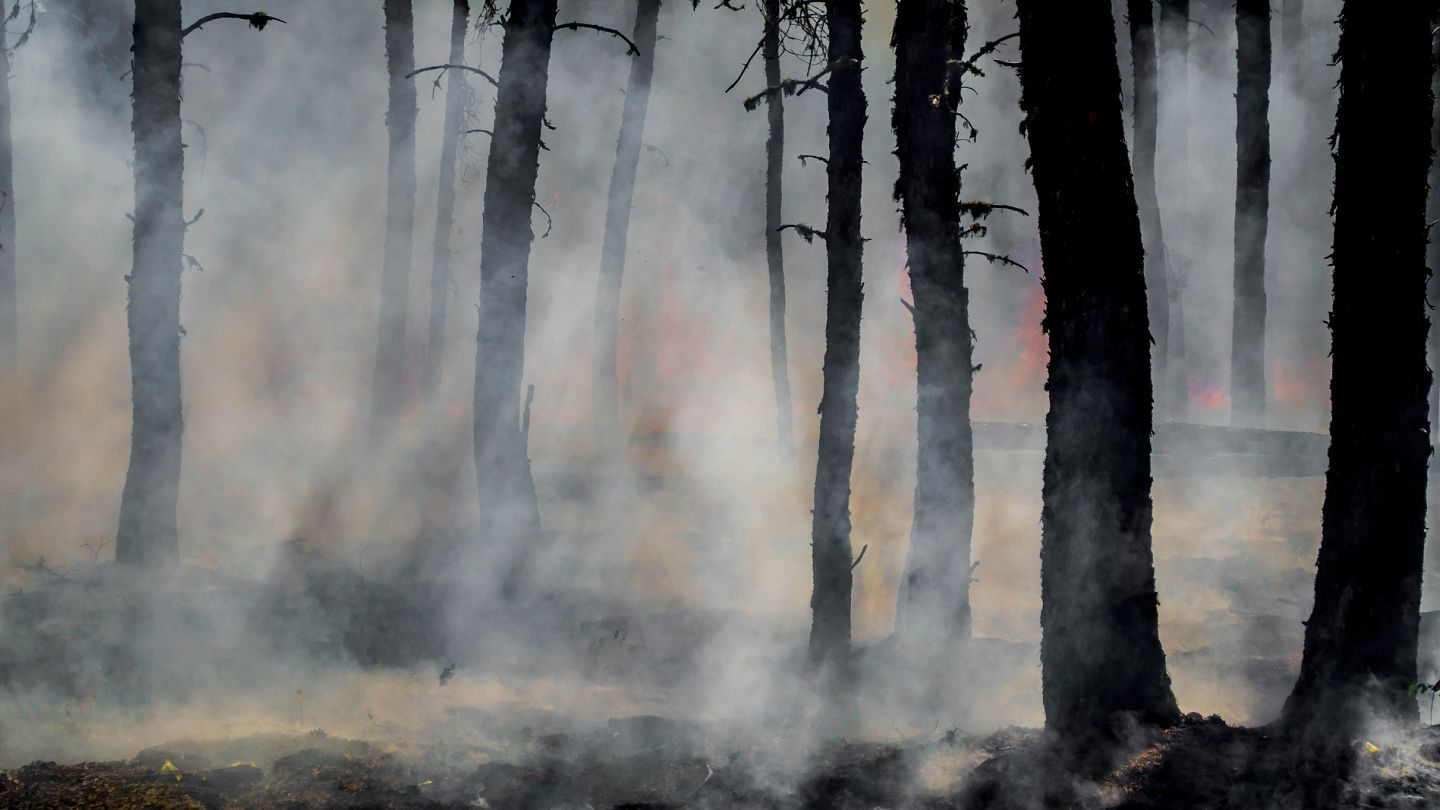
Wildfires are becoming more frequent, larger and more destructive across the globe, and climate change has been identified as a key reason for the escalation.
The second annual State of Wildfires report, published by researchers at the University of Melbourne this week, reveals that between March 2024 and February 2025, 3.7 million square kilometres and 100 million people were affected by wildfires worldwide.
That amounts to an area larger than India and puts a staggering €183 billion worth of homes and infrastructure at risk.
What makes forests more flammable?
The report says that climate change is not just creating more dangerous fire-prone weather but is also affecting how vegetation grows and dries, providing more fuel for fires.
In South America, the Pantanal-Chiquitano region experienced fires 35 times larger than they would have been in a world without human-induced warming, the report finds.
“The deadly Los Angeles wildfires in January were twice as likely and burned an area 25 times bigger than they would have [been] in a world with no human-caused global warming,” says co-author Hamish Clarke, from the University of Melbourne.
Few parts of the world were spared from intensifying fire damage. In the authors’ home country, more than 1,000 large fires burned around 470,000 hectares in western Australia, while more than five million hectares burned in central Australia.
Record-breaking fires also ravaged parts of the Amazon and Congo, releasing billions of tonnes of carbon dioxide.
The Amazon alone saw its “most devastating” fire season in over two decades, despite slowing deforestation. Last year, wildfires affected 3.3 million hectares in the region and released as much carbon dioxide as an entire country, according to a recent study from the European Commission’s Joint Research Centre.
Europe has not escaped the trend.
By July 2025, heatwaves, drought and poor forest management had burned 232,000 hectares of land, roughly the size of Luxembourg, as southern Europe, in particular, battles increasingly intense fire seasons.
Global consequences for people and ecosystems
The consequences of climate-driven fires go beyond the immediate devastation they create.
According to a new study published in Nature this week, tropical rainforests in Queensland, Australia, have become the first in the world to flip from being a carbon sink to an emissions source.
The researchers analysed 49 years of data from 20 sites and found that carbon is being emitted because trees are dying and decaying faster than they can be replaced.
The researchers cite drier air and rising temperatures for the change. The conditions have put unprecedented stress on the trunks and branches of trees, although not the roots, they explain. That has undermined their ability to store greenhouse gases.
Scientists warn that protecting and restoring these ecosystems is now more urgent than ever, as the combination of hotter conditions, prolonged droughts and more flammable vegetation threatens both biodiversity and the planet’s ability to absorb carbon.
“We are witnessing the effects of climate change play out across our world on an extreme scale,” says Clarke, adding a note of optimism:
“While the future looks challenging, the report emphasises that it’s not too late to act.”